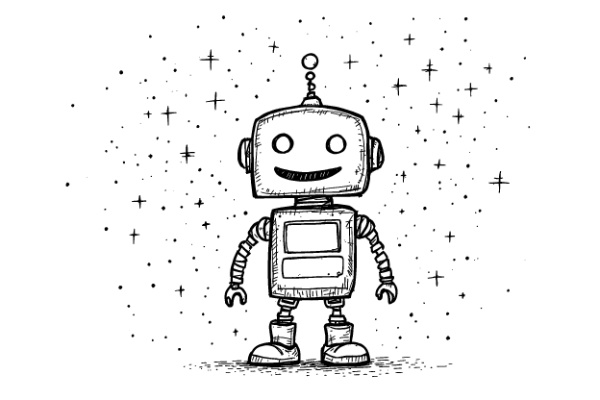Have you ever wondered what happens to decades of experience when a seasoned employee retires?
It’s like watching a library burn down—irreplaceable knowledge going up in smoke.
But what if there was a way to capture that wisdom before it’s lost?
Let me tell you about Sarah and Mike.
Sarah, a 62-year-old project manager, is the backbone of her team.
Mike, 28, is fresh out of graduate school, brimming with new ideas but lacking the practical know-how.
When they were paired up for a cross-generational mentorship program, neither expected much.
But over time, something magical happened.
Sarah shared nuggets of wisdom that can’t be found in textbooks, while Mike introduced Sarah to cutting-edge technologies.
Together, they became an unstoppable force.
Cross-generational mentorship isn’t just a nice-to-have; it’s a strategic imperative.
Why Should You Care About Cross-Generational Mentorship?
Because losing knowledge is expensive—astonishingly so.
Did you know that U.S. companies lose an estimated $160 billion annually due to employee turnover?
When experienced employees walk out the door without passing on their knowledge, it’s not just a staffing issue; it’s a hemorrhage of intellectual capital.
Is your organization prepared for the brain drain?
With Baby Boomers retiring en masse and Gen Z entering the workforce, the generational gap has never been wider.
Yet, this gap presents a unique opportunity to cultivate a dynamic exchange of ideas.
By fostering cross-generational mentorship, organizations can retain critical knowledge, boost employee engagement, and drive innovation.
It’s time to bridge the divide.
But how?
Let me walk you through it.
The Hidden Goldmine in Your Workforce
Imagine sitting on a treasure chest without realizing it.
Your seasoned employees are that treasure.
They hold the institutional memory, the unwritten rules, the subtle nuances that make your organization tick.
But here’s the kicker: they’re not going to be around forever.
Are you tapping into this goldmine before it’s too late?
Cross-generational mentorship unlocks this wealth of knowledge.
It’s not just about the older teaching the younger; it’s a two-way street.
Younger employees bring fresh perspectives, tech-savviness, and new methodologies.
When these generations collaborate, the synergy can lead to breakthroughs that propel the organization forward.
Remember when a seasoned engineer teamed up with a tech-savvy intern to revolutionize the production process?
That’s the power of cross-generational mentorship.
Intergenerational collaboration is your competitive edge.
Breaking Down the Barriers
But let’s be honest—cross-generational mentorship isn’t without its challenges.
Different communication styles, varying expectations, and potential resistance can create friction.
So how do we overcome these hurdles?
First, acknowledge the differences.
Older employees may prefer face-to-face meetings, while younger ones might lean towards digital communication.
By recognizing these preferences, you can tailor the mentorship approach accordingly.
Second, foster a culture of mutual respect.
Emphasize that both parties have valuable contributions.
Aligning goals can also help.
When both mentor and mentee see the bigger picture—organizational success—they’re more likely to collaborate effectively.
At our own company, we found that pairing mentors and mentees based on shared interests rather than age led to more fruitful relationships.
Common ground is the foundation of successful mentorship.
The Role of Technology in Facilitating Mentorship
In the digital age, technology plays a pivotal role in bridging the generational gap.
Communication platforms, knowledge management systems, and collaborative tools can enhance mentorship programs.
But it’s not just about tools; it’s about using them effectively.
Ever heard of reverse mentoring?
That’s when younger employees mentor older ones on technology and current trends.
It’s a game-changer.
By integrating platforms like our own Machine Hiring ATS, organizations can streamline mentorship pairings, track progress, and facilitate ongoing communication.
We designed Machine Hiring to not only match candidates but also support internal initiatives like mentorship programs.
Leveraging technology accelerates knowledge transfer.
But don’t just take my word for it.
Consider the case of Company XYZ, which implemented a digital mentorship platform that doubled their knowledge retention rates within a year.
Technology isn’t a barrier; it’s a bridge.
Crafting an Effective Cross-Generational Mentorship Program
So you’re convinced.
But where do you start?
Here’s a roadmap to kickstart your cross-generational mentorship program:
1. Set Clear Objectives
Define what you want to achieve.
Is it knowledge transfer, skills development, or cultural integration?
2. Pair Participants Strategically
Consider skills, interests, and personalities.
Random pairings can lead to mismatches.
Our ATS, Machine Hiring, can assist in identifying optimal pairings based on employee profiles.
3. Provide Training
Equip mentors and mentees with the tools they need.
This could include communication skills, goal setting, and feedback mechanisms.
4. Monitor Progress
Set milestones and regularly check in.
Adjust the program as needed based on feedback.
5. Recognize and Reward
Celebrate successes to motivate participants.
Recognition can be a powerful incentive.
By following these steps, you’re setting the stage for a successful mentorship program that retains knowledge and enriches your organization.
A well-designed mentorship program is an investment in your company’s future.
The Ripple Effect: Beyond Knowledge Retention
Cross-generational mentorship does more than just retain knowledge.
It enhances employee engagement, boosts morale, and fosters innovation.
Employees feel valued when they can contribute and learn simultaneously.
Did you know that companies with strong mentorship programs have 50% higher retention rates?
That’s not just a statistic; it’s a testament to the power of mentorship.
Moreover, mentorship cultivates leadership skills.
Today’s mentee could be tomorrow’s mentor.
It’s a continuous cycle that benefits everyone.
The organizational culture becomes more cohesive, and employees across all levels feel connected.
Mentorship builds a resilient and agile workforce.
Challenges Are Opportunities in Disguise
Sure, implementing a cross-generational mentorship program isn’t a walk in the park.
Resistance to change, time constraints, and resource allocation are real concerns.
But consider this: every challenge is an opportunity to innovate.
Worried about time constraints?
Incorporate mentorship into regular work schedules.
Facing resistance?
Communicate the benefits clearly and involve employees in the program’s design.
At our company, we held open forums to discuss concerns and gather ideas.
The result?
A program tailored to our unique organizational culture.
Employee involvement is the key to overcoming hurdles.
A Glimpse into the Future
Picture an organization where knowledge flows freely across all levels.
A place where the wisdom of experience merges with the energy of innovation.
This isn’t a fantasy; it’s a reachable goal.
But it requires action today.
As CHROs, HR Directors, and HR Managers, you hold the power to shape this future.
By embracing cross-generational mentorship, you’re not just retaining knowledge—you’re cultivating a thriving, dynamic organization ready to tackle the challenges of tomorrow.
The future belongs to organizations that harness the full spectrum of their talent.
So, what’s stopping you?
Take the first step.
Assess your organization’s readiness.
Consult with your team.
Explore tools like Machine Hiring that can facilitate the process.
Because at the end of the day, retaining knowledge isn’t just about preserving the past—it’s about enriching the future.
Ready to unlock the hidden potential within your organization?
Request a free demo of Machine Hiring today and discover how we can help you build a robust cross-generational mentorship program.
Related Posts
- Stop Training Like It’s 1999: The Unconventional Guide to Upskilling Your Team for the Future
- Succession Planning: Your Company’s Future-Proof Strategy
- Future-Proof Your Workforce: Embracing Lifelong Learning
- The Hidden ROI of Employee Onboarding: Why Your First 90 Days Make or Break Success
- The Art of Selecting Great People: A Leader’s Most Critical Skill


